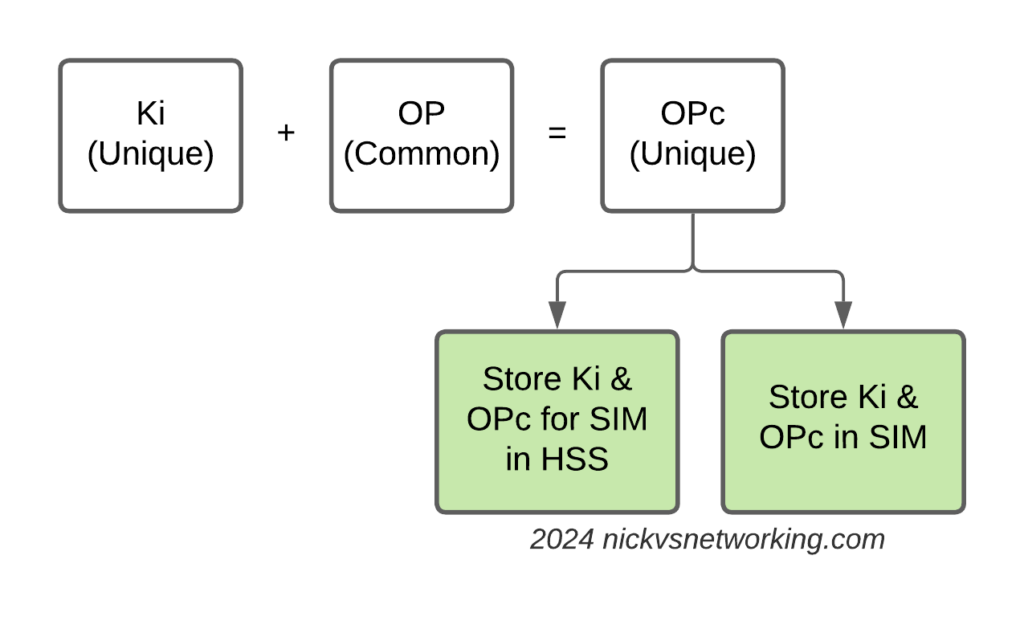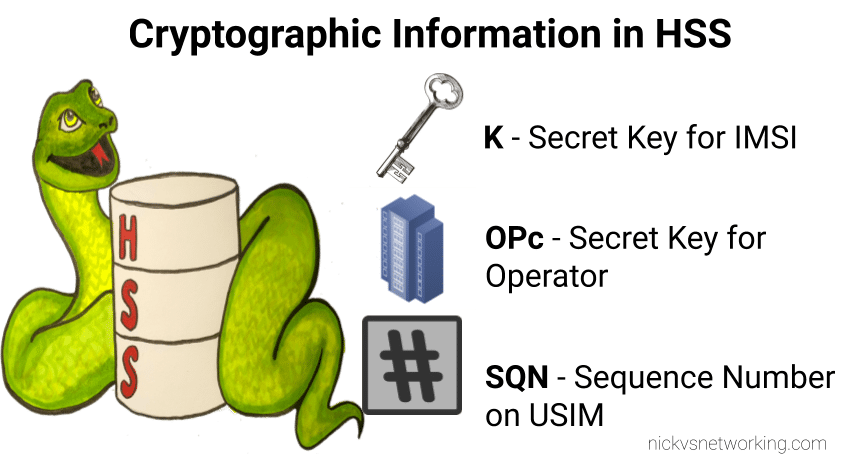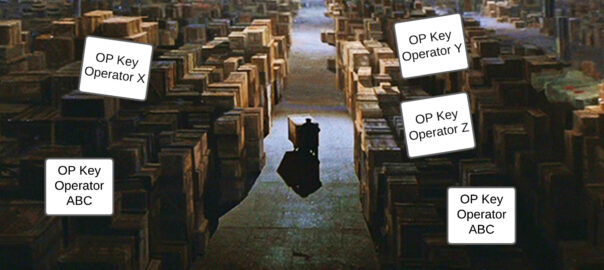Years ago I wrote an article looking at how Key generation works inside SIM cards for LTE & 5G-NR.
I got this great question the other day:
Hello Nick, thank you for the article.
What is the use of the OPc key to be derived from OP key ?
Why can’t it just be a random key like Ki ?
It’s a super good question, and something I see a lot of operators get “wrong” from a security best practices perspective.
Refresher on OP vs OPc Keys
The “OP Key” is the “operator” key, and was (historically) common for an operator.
This meant all SIMs in the network had a common OP Key, and each SIM had a unique Ki/K key.
The SIM knew both, and the HSS only needed to know what the Ki was for the SIM, as they shared a common OP Key (Generally you associate an index which translates to the OP Key for that batch of SIMs but you get the idea).
But having common key material is probably not the best idea – I’m sure there was probably some reason why using a common key across all the SIMs seemed like a good option, and the K / Ki key has always been unique, so there was one unique key per SIM, but previously, OP was common.
Over time, the issues with this became clear, so the OPc key was introduced. OPc is derived from mushing the K & OP key together. This means we don’t need to expose / store the original OP key in the SIM or the HSS just the derived OPc key output.
This adds additional security, if the Ki for a SIM were to be exposed along with the OP for that operator, that’s half the entropy lost. Whereas by storing the Ki and OPc you limit the blast radius if say a single SIMs data was exposed, to only the data for that particular SIM.

This is how most operators achieve this today; there is still a common OP Key, locked away in a vault alongside the recipe for Coca-cola and the moon landing set.
But his OP Key is no longer written to the SIMs or stored in the HSS.

Instead, during the personalization process (The bit in manufacturing where SIMs get the unique data written to them (The IMSI & keys)) a derived OPc key is written to the card itself, and to the output files the operator then loads into their HSS/HLR/AuC.
This is not my preferred method for handling key material however, today we get our SIM manufacturers to randomize the OP key for every card and then derive an OPc from that.
This means we have two unique keys for each SIM, and even if the Ki and OP were to become exposed for a SIM, there is nothing common between that SIM, and the other SIMs in the network.

Do we want our Ki to leak? No. Do we want an OP Key to leak? No. But if we’ve got unique keys for everything we minimize the blast radius if something were to happen – Just minimizes the risk.

Not all cards / card manufacturers will [have to] compute the OPc from the OP at card manufacturing. There are Cards / card OSs that can be configured to store the OP directly on the cards. This way you really are personalizing an identical OP on all cards.
Of course that’s not smart from a security point of view, just wanted to add that even in the OP case, it is not always neccessarily the case that the OPc is computed off-card by the card manufacturer.